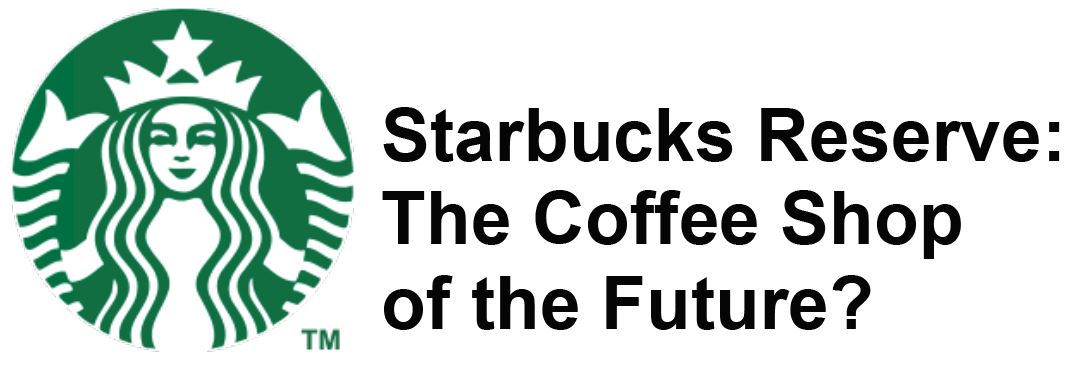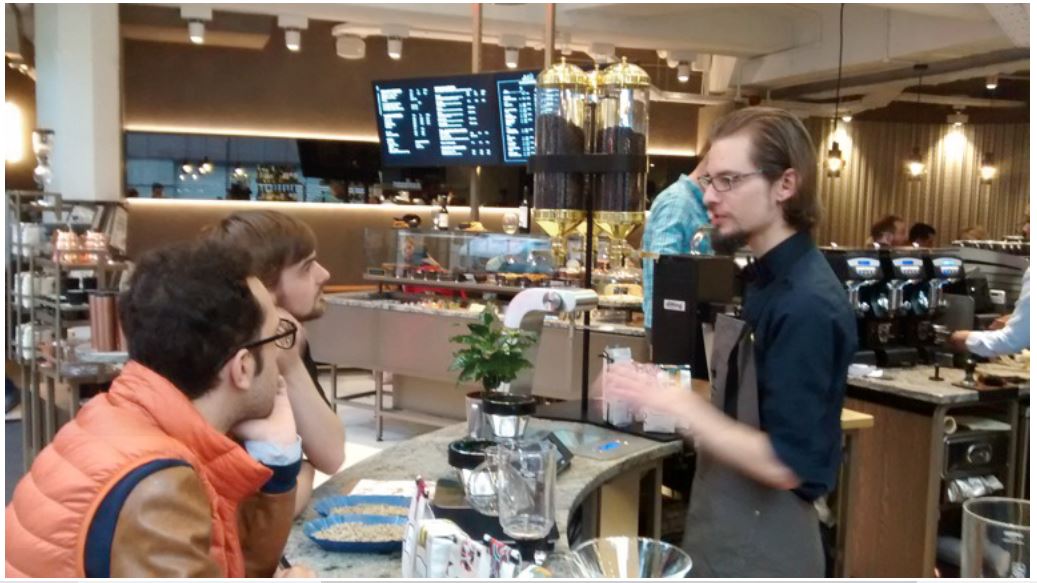
Source: FBIC Global Retail & Technology
Back to the Future showed us in 1985 what October 21, 2015, might look like. Unfortunately, in the movie, Marty McFly did not stop for a tall latte at Starbucks, which, back then, was a coffee shop chain with just 46 stores across the Northwest and Midwest of the US. So, we had to wait until the actual “Back to the Future Day,” October 21, 2015, to get an idea of the future of coffee shop chains—that was the day Starbucks opened its new concept store, Starbucks Reserve, in central London.
The store combines superior design—modern furniture and large glass walls on the front of the outlet—with a traditional British pub feeling—with a low bar where people can sit and interact with the baristas.

Source: FBIC Global Retail & Technology
Visitors popping into the store immediately feel that they are not in a regular Starbucks. A barista at the door welcomes customers and asks where they would like to be seated. A large digital menu board is visible over a “grab and go” area that displays light snacks and bottled drinks. The display is situated just beyond the entrance to better serve on-the-go customers.
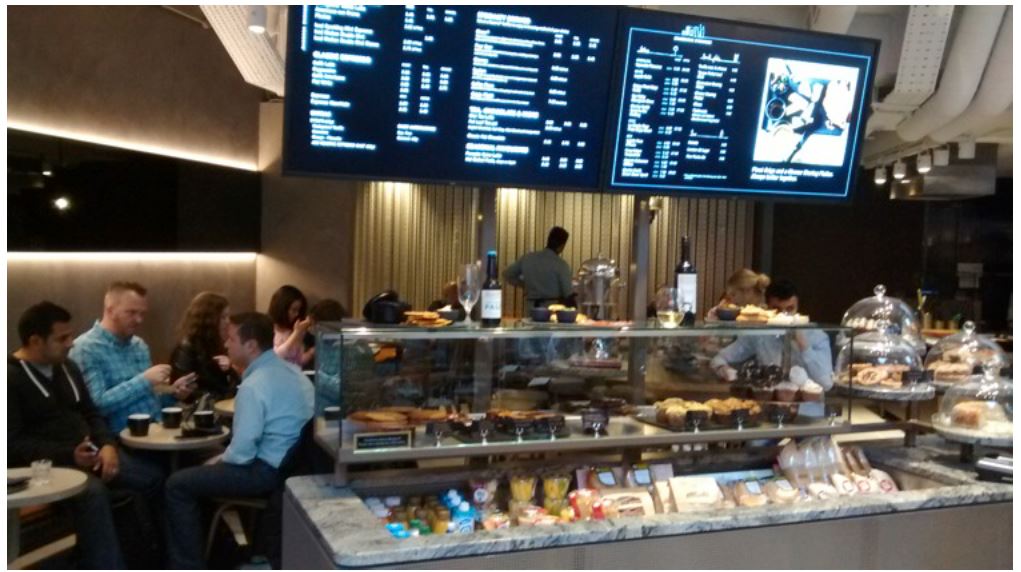
Source: FBIC Global Retail & Technology
One might look for the traditional queue at the counter, but there are no counters in this store. All the transactions occur either at the table or, for on-the-go orders, at the entrance, through tablets that each of the baristas hold.
Starbucks Reserve is a store for connected consumers, offering fast wi-fi, sockets for customers’ laptops and Powermat wireless charging points for smartphones.
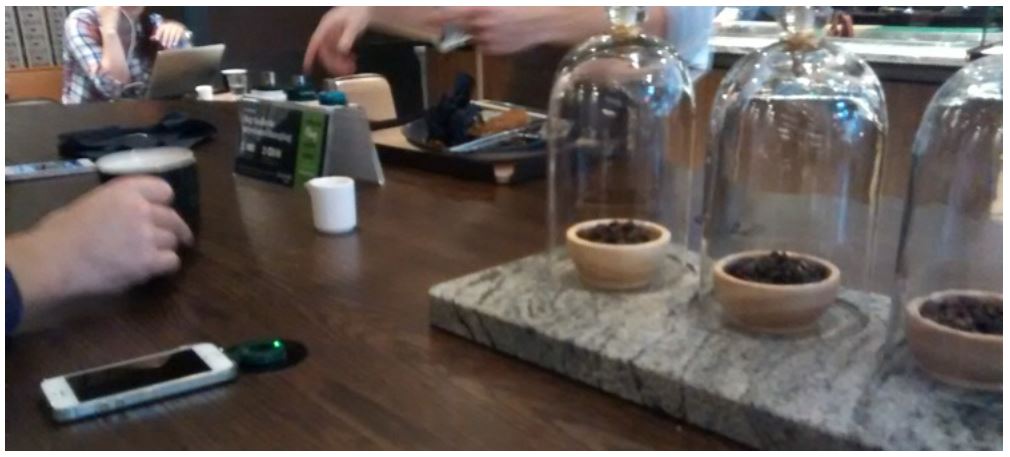
Source: FBIC Global Retail & Technology
Apparently aiming to attract a discerning clientele, Starbucks Reserve features special coffees and brewing methods. Mimicking the “edgy” independent coffee shops that can be found in London, the store offers different brewing methods—Chemex, pour over, siphon, Clover and the classic Nuova Simonelli machine—some of which are quite spectacular. The siphon, for instance, is a system consisting of a double-chamber vacuum and halogen beam that resembles a piece of chemistry lab equipment.
Coffee blends are also quite unique, featuring beans from microplantations in coffee-growing countries such as Vietnam, Tanzania and Peru, and changing periodically, so that clients can always find some new blend to try. The store also features a coffee-tasting corner, where customers can sit at the bar, interact with the baristas, see them mastering the art of coffee making and taste the final result.
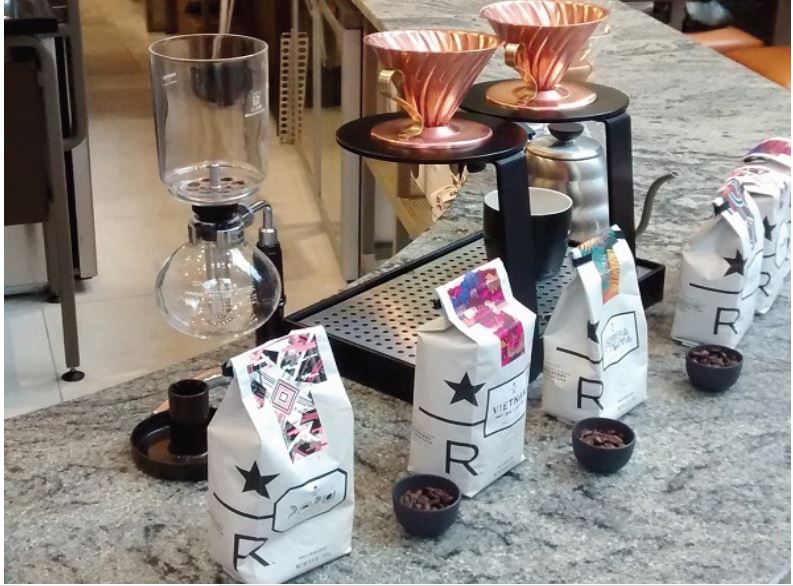
Source: FBIC Global Retail & Technology
Unique for a Starbucks, every day from 4 p.m. on, the store serves a selection of world wines and two locally bottled craft beers, brewed in Hackney and Battersea, together with charcuterie plates for sharing. With this move, Starbucks Reserve, which is located in the heart of London’s theater district, aims to become a destination for a late afternoon or early evening aperitif for those heading to a restaurant or the theater.
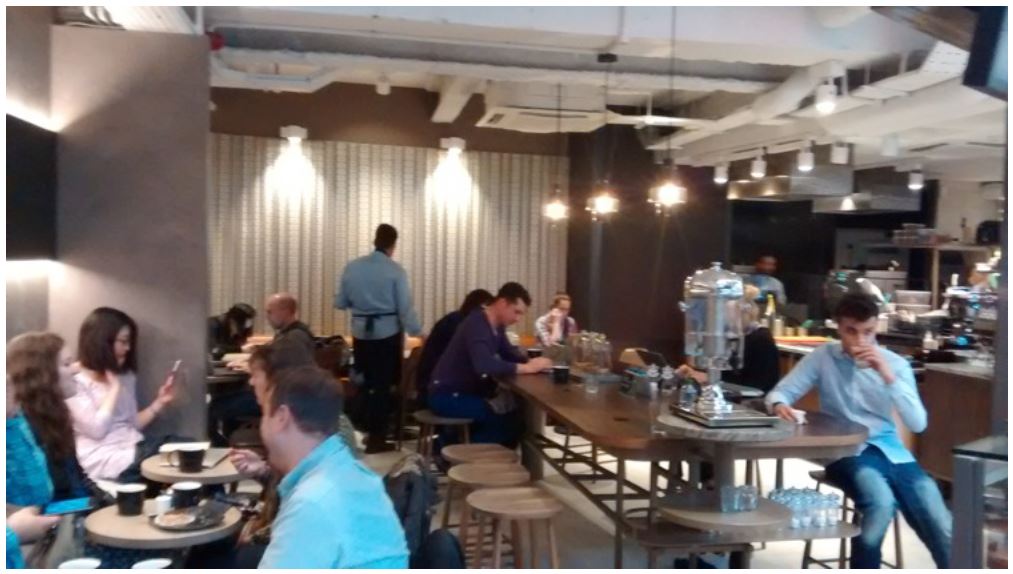
Source: FBIC Global Retail & Technology
Starbucks Reserve is most likely going to remain confined to premium locations such as central London, and it is very unlikely that the concept store will become the default outlet format for the Seattle-based company. However, a number of innovations introduced by the concept store are very likely to be replicated in regular Starbucks stores.
For instance, wireless charging points for smartphones have already been installed at some regular Starbucks stores. The elimination of physical counters may also make sense in some regular outlets, as it could reduce wait times—and Starbucks has already moved in this direction with its new option to order via its mobile app.
As consumers become more sophisticated, it is also likely that regular stores will start serving more premium coffee. But we think it is unlikely that the premiumization in most Starbucks outlets will go as far as introducing five different coffee-brewing methods or serving wines and charcuteries.
The new Starbucks Reserve store is clearly an experiment. It can be used to test the market and see what innovations can be successfully exported to regular Starbucks stores to improve the customer experience.
